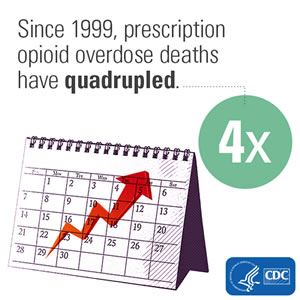It has long been suspected, but now a new study has confirmed that changes to prescription painkiller prescribing practices inadvertently increased heroin use. In 2010 policy makers began to adjust how much OxyContin could be prescribed to patients and changed the form in which OxyContin was made, making it more difficult to crush or snort. These changes were in response to a 2007 guilty plea made by Purdue Pharma (the maker of OxyContin) that they purposely mislead consumers about how addictive the pills actually were.
And while these changes did help to reduce the amount of OxyContin being abused by patients and addicts, there has been some unintended consequences. Because so many were already addicted to the powerful opiate, they turned to another, similar drug to take the place of the OxyContin they could no longer crush and snort. Heroin became the obvious choice to these people, especially since this drug was cheaper and usually easier to obtain.
Since the policy changes in 2010, the amount of people that are currently abusing heroin has risen dramatically. In fact, according to researchers, the change in OxyContin led to an almost 80% increase in the amount of heroin-related deaths in this country. A closer examination of these statistics shows that states throughout the nation are seeing an almost identical correlation between current heroin use and former OxyContin use.
“States with the highest initial rates of OxyContin misuse experienced the largest increases in heroin deaths. Results show that this differential increase in heroin deaths began precisely in the year following reformulation,” explained the researchers.
So, while changing accessibility to OxyContin was of course necessary, now policy makers have to grapple with the increased heroin epidemic. In the past, the correlation between increased OxyContin laws and increased heroin use was suspected, but not verified. This study has proven that there is a direct correlation between the two issues. Of course, heroin is more difficult to control, lawmakers cannot monitor the manufacturing or dispersal of the drug, two of the most effective solutions in the OxyContin shift.

 Prescription pain medications are highly effective when used as directed. However, opioid painkiller abuse by patients and people other than those for whom the drugs were prescribed is a growing problem in many parts of the US. It can lead to a number of problems, including addiction, overdose, depression and lost productivity at work.
Prescription pain medications are highly effective when used as directed. However, opioid painkiller abuse by patients and people other than those for whom the drugs were prescribed is a growing problem in many parts of the US. It can lead to a number of problems, including addiction, overdose, depression and lost productivity at work. 